CoolSculpting in Japan
Search and Compare the Best Clinics and Doctors at the Lowest Prices for CoolSculpting in Japan
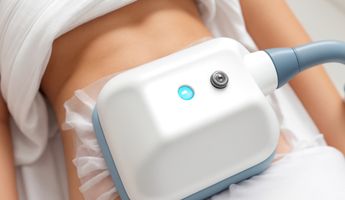
Find the best clinics for CoolSculpting in Japan
No clinics available
Thailand offers the best prices Worldwide
Price: $ 111

- Home
- Japan
Compare Before & After Photos of _procedure_photos.phpCoolSculpting
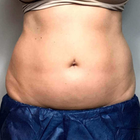
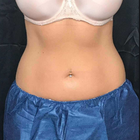
Front view

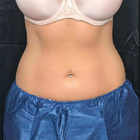
Front view
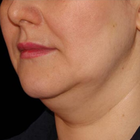
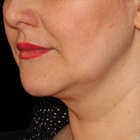
Half-side view
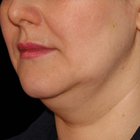
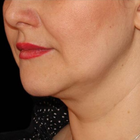
Half-side view
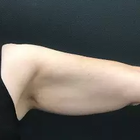
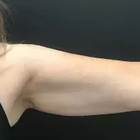
Front view
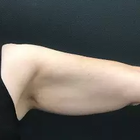
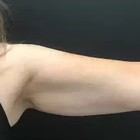
Front view
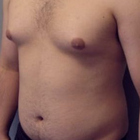
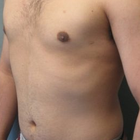
Half-side view
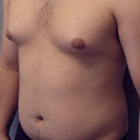
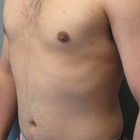
Half-side view

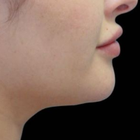
Full-side view

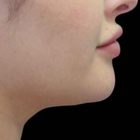
Full-side view
WHY US?
At Medijump, we're making medical easy. You can search, compare, discuss, and book your medical all in one place. We open the door to the best medical providers worldwide, saving you time and energy along the way, and it's all for FREE, no hidden fees, and no price markups guaranteed. So what are you waiting for?

Free

Best Price

Widest Selection

Risk-Free
What you need to know about CoolSculpting in Japan

CoolSculpting, also known as cryolipolysis, is a popular non-surgical fat reduction procedure that uses a form of controlled cooling to remove stubborn fat deposits that have not responded to traditional diet and exercise. It is FDA-cleared for removing fat cells from the abdomen, flanks, and thighs without surgery or downtime. In Japan, many patients opt for CoolSculpting because it allows them to resume their normal activities immediately after the procedure.
The CoolSculpting procedure essentially works by freezing unwanted fat cells, causing them to die and be naturally eliminated by the body over time. One of the notable things about the procedure is that it does not involve any cuts, anaesthesia, or significant downtime. Unlike liposuction, CoolSculpting is not a weight-loss solution, but rather a body contouring procedure, it's ideal for reducing small, localized fat bulges. So despite being a less invasive alternative, the procedure might not offer the extensive fat reduction that surgeries often deliver.
What is the cost of CoolSculpting in Japan?
When calculating the cost for a CoolSculpting procedure in Japan, remember that several aspects factor into the calculation. The final price is governed by specifics like the regions you wish to target, the number of treatment rounds you need, and the particular location. To give a ballpark figure, people often spend from "$500 through $4,000 per each treatment round". Please take note, these values serve as a guide, and the individual's specific goals and the treatment plan can alter the final cost.
Various clinics in Japan do offer provisions for financing to lighten the burden. Periodically, they might also extend promotional campaigns to offer more affordability. Even with cost being a major factor to consider, it's equally important to count in the level of expertise of the practitioner performing the procedure, along with ensuring the safety and efficacy of the treatment.
For a more defined estimate of costs that covers your personal treatment plan, we encourage you to set up a direct consultation with a CoolSculpting professional.
What does a CoolSculpting Procedure Involve?
During a CoolSculpting process, a trained professional starts by marking the specific area on your body for treatment, followed by the application of a gel pad that acts as a protective layer between your skin and the cooling panel of the device. They then use a uniquely designed applicator, functioning much like a vacuum, to gently draw your skin into its cup. This can create a feeling akin to mild pinching, tugging, or pulling. On top of that, CoolSculpting does not involve any incision, stitches, or anaesthesia.
Next, the actual cooling mechanism activates, which can cause a numbing effect on the part of your body being treated. The principle guiding CoolSculpting revolves around the controlled cooling of fat cells beneath the skin, essentially freezing them off. It's significant to highlight that while the fat cells reach the freezing point and get altered, the skin, as well as other adjacent tissues, remain unaffected. This is due to fat cells having a higher freezing temperature.
As the procedure continues, patients can stay relaxed, read, handle emails or even take a brief nap. Typically, each area's session lasts anywhere between 35-60 minutes, and this time frame varies according to the treatment area size.
How Long Should I Stay in Japan for a CoolSculpting Procedure?
Thanks to the non-invasive nature of CoolSculpting in Japan, patients are normally free to resume their usual activities directly after treatment. Every CoolSculpting session generally ranges from 35 to 60 minutes, allowing you to effectively integrate it into your day, perhaps during a lunch break, and return to your routine immediately afterward. Therefore, if you're considering travelling to Japan for the procedure, there's no need for an extended stay.
That said, depending on the number of treatment areas, your healthcare provider may suggest multiple sessions. If this is the case, you may consider a short stay of a few days in Japan for convenience and easy access to your appointments. As with any medical procedure, it's beneficial to discuss these logistics with your chosen clinic or specialist ahead of time.
What's the Recovery Time for CoolSculpting Procedures in Japan?
One of the unique attributes of CoolSculpting is that there's virtually no recovery time necessary. Unlike surgical procedures, CoolSculpting in Japan is completely non-invasive, causing minimal discomfort during and after the treatment. Patients commonly return to work, hit the gym, or carry on with their regular activities right after their appointment.
However, it's normal to experience minor side effects such as redness, swelling, bruising, or sensitivity in the treated area. These symptoms are temporary and typically resolve within a few days or weeks. Always consult with your healthcare provider for a personalized post-treatment plan. Keep in mind that results from CoolSculpting aren't immediately discernible, final results are typically visible after two to three months.
What's the Success Rate of CoolSculpting Procedures in Japan?
With a high satisfaction rate of 82%, CoolSculpting is making a positive impact in the world of non-surgical fat reduction. Isn't it impressive when people have such great experiences that they recommend it to their pals? That's the power of CoolSculpting! Research shows us that just one CoolSculpting session can knock off between 20% to 80% of fat in the treated area. While some individuals hit their body goals at one go, others might need a couple of rounds to knock out that stubborn fat. Keep in mind, however, the fruits of your CoolSculpting session take a bit of time to show - think of it like planting a seed and watching it grow. You'll start noticing changes from the fourth week, and by two months, you'll see the most striking results.
Of course, while CoolSculpting is usually safe, it's only fair to let you know about potential side effects, even though they're pretty rare. We're talking temporary aches, cramps, stinging, bruising, some skin redness, itching, and even a bit of a tingly feeling. In rarer cases, you could see an increase in fat cells, a condition known as paradoxical adipose hyperplasia.
Ultimately, we're all unique, and how our bodies respond to treatments like CoolSculpting can also be different. If you're considering CoolSculpting, having a chat with a certified provider can work wonders. They can give you the lowdown on the process, set your expectations right, and see how the treatment can help you meet your body goals.
Are there Alternatives to CoolSculpting Procedures in Japan?
Indeed, if you're contemplating non-surgical or surgical body contouring methods in Japan, you have options other than CoolSculpting. Bear in mind, that every person is unique, and alternatives should be considered based on your specific concerns, health condition and personal goals.
Among the non-surgical alternatives to CoolSculpting are:
- SculpSure: This treatment uses controlled laser technology to destroy fat cells by heating them.
- UltraShape: This method employs ultrasound technology for body contouring, reducing unwanted fat cells.
As for surgical alternatives, consider:
- Liposuction: A surgical procedure that removes fat deposits directly.
- Abdominoplasty (Tummy Tuck): This process primarily removes excess skin and fat from the abdomen and tightens the abdominal muscles.
Each of these options presents its own set of benefits and potential drawbacks. For instance, while surgical methods like liposuction and abdominoplasty often deliver more substantial results, they are more invasive and come with extended recovery periods and potential risks.
It's advisable to consult with a trusted healthcare professional to discuss these alternatives alongside CoolSculpting. Together, you can decide which option best aligns with your individual expectations and needs.
What Should You Expect Before and After the CoolSculpting Procedure?
Before the CoolSculpting procedure, your healthcare provider in Japan will conduct a thorough consultation during which they'll review your medical history and perform a physical examination. Additionally, they'll use this time to discuss your expectations, explain the process, and create a tailor-made treatment plan. On the day of the procedure, the applicator delivers precisely controlled cooling to the targeted fat cells. Patients may feel an initial sucking sensation followed by cooling, but many people read, work on laptops or even nap during the session. After the applicator is detached, the provider will briefly massage the area to break up the treated fat cells and enhance fat reduction. Post-procedure, the treated area may seem somewhat reddened, tender, swollen, or bruised, but these are temporary and expected. These side effects should subside within a few weeks. You can usually resume regular activities immediately without any recovery period.
What sort of Aftercare is Required for CoolSculpting Procedures in Japan?
Post-treatment care for CoolSculpting procedures in Japan is typically uncomplicated, mirroring a significant perk of the treatment – a zero downtime recovery. This feature allows patients to promptly return to their regular routines. However, like every medical procedure, patients could experience short-lived side effects, such as slight redness, mild swelling, some bruising or increased sensitivity in the treated area. But these are mostly temporary and recede within a few weeks. Keep in mind that individual reactions can vary and everyone's body may respond differently after treatment.
In addition to dealing with any minor side effects, aftercare emphasizes the critical role of a balanced lifestyle. Upholding a healthy diet along with regular exercise is not just vital for enhancing and sustaining the CoolSculpting results, but it also bolsters overall well-being. Remember, although CoolSculpting permanently eradicates certain fat cells, it does not prevent possible weight gain leading to expansion of the existing fat cells. Scheduled follow-up visits with your healthcare provider forms a key part of the journey, aiding in monitoring progress and ensuring proper healing. In essence, a commitment to healthy living is the cornerstone of optimal aftercare following CoolSculpting procedures in Japan.
Is the CoolSculpting procedure safe?
Absolutely, CoolSculpting by and large enjoys a reputation as a safe treatment modality. It has received the thumbs up from the FDA in the United States for its effectiveness in reducing fat in designated areas of the body. Being a non-invasive procedure, it brings down the chances of complications and risks quite significantly when contrasted with other intrusive fat-reduction methods such as liposuction.
Regardless, it's prudent to remember that even the safest of procedures could cause mild side effects. With CoolSculpting, you might experience gentle redness, sensitivity, swelling or even bruises in the area of treatment. Such occurrences are typically short-lived, receding within a few weeks.
Before the initiation of any therapeutic intervention, including CoolSculpting, it's of utmost importance to hold comprehensive discussions with your healthcare provider about any concerns or risks to make a fully informed decision.
CoolSculpting v's Liposuction
Liposuction, although highly effective, is an invasive procedure that requires small incisions for the introduction of a cannula, a thin tube used to dislodge and suction fat. Due to its surgical nature, it unavoidably leaves behind minimal scarring, though the size of these scars is typically tiny and often inconspicuous. Moreover, the procedure necessitates some form of anaesthesia, either local or general. This contributes to an extended recovery period in the subsequent weeks, during which patients may experience discomfort and temporary restrictions in physical activities.
Conversely, CoolSculpting offers a unique advantage as a non-invasive treatment. It does its work quietly in the background, destroying fat cells which are gradually expelled by the body naturally over time, resulting in nearly instantaneous recovery. Patients can return to their routine activities immediately after each treatment. However, pricing for CoolSculpting is typically per site treated, and depending on the amount of fat, an individual may need 1-3 sessions per site, which can add up. Therefore, when there are multiple areas of concern, liposuction could potentially be a more economical choice.
Remember, it's just as essential to consider the safety, effectiveness and long-term benefits of both options as it is to consider cost and recovery time factors. Always consult a healthcare provider to discuss your specific goals and find the most suitable treatment method for you.
Whilst the information presented here has been accurately sourced and verified by a medical professional for its accuracy, it is still advised to consult with your doctor before pursuing a medical treatment at one of the listed medical providers
No Time?
Tell us what you're looking for and we'll reachout to the top clinics all at once
Enquire Now

Popular Procedures in Japan
Prices Start From $120

Prices Start From $931

Prices Start From $76

Prices Start From $236

Recommended Medical Centers in Japan for procedures similar to CoolSculpting

- Interpreter services
- Translation service
- Religious facilities
- Medical records transfer
- Medical travel insurance
- Health insurance coordination
- TV in the room
- Safe in the room
- Phone in the room
- Private rooms for patients available

- Interpreter services
- Translation service
- Religious facilities
- Medical records transfer
- Medical travel insurance
- Health insurance coordination
- TV in the room
- Safe in the room
- Phone in the room
- Private rooms for patients available

- Interpreter services
- Translation service
- Religious facilities
- Medical records transfer
- Medical travel insurance
- Health insurance coordination
- TV in the room
- Safe in the room
- Phone in the room
- Private rooms for patients available

- Interpreter services
- Translation service
- Religious facilities
- Medical records transfer
- Medical travel insurance
- Health insurance coordination
- TV in the room
- Safe in the room
- Phone in the room
- Private rooms for patients available
CoolSculpting in and around Japan
About Japan
Japan is special in its own way; the culture, food, people, as well as technology are envied by the world over. With old Japan, comes the ancient tradition in the form of a geisha performance, onsen (hot spring) visit in the mountains, tea ceremony, or shrine visit. In contrast, there is modern Japan, full of smart systems and electronics, colorful advertisements and displays, and ultra-modern architecture. In recent years, Japan has become one of the top destinations in the world for oncology treatments and sees many tens of thousands of medical tourists each year. Many of these travel from within the region, including China and Korea, but they are unable to compete with the SE Asian nations with prices. Private hospitals are located across the country, with a particular focus in major cities like Tokyo, Kyoto, and Osaka. 25 of these facilities are JCI-accredited, with many offering CoolSculpting procedures.
Popular Parts of Japan
Located in the Pacific Ocean, Japan is a stratovolcano archipelago. The four largest islands are Honshu, Hokkaido, Kyushu, and Shikoku. With a population of 127 million, 98% are ethnic Japanese. The country perfectly balances traditional with modern technology. Tourists will first see its exceptionally modern face, but after traveling around, they will find many opportunities to connect with the beautiful traditional culture.
- Tokyo is Japan’s capital, one of the 47 prefectures of Japan. It’s a huge metropolis that offers traditional arts and culture, futuristic infrastructures, and good restaurants. The cherry blossoms that bloom in Spring is one of the most popular sights. The soft pink petals are an icon of the country. There is an unlimited choice of shopping, many museums that cover every era of Japanese art history, and even a robot restaurant.
- Kyoto is made of religious architecture, with around 2000 temples and shrines. It moves at a slower pace than any other city in Japan. Filled with samurais, geishas, Zen gardens, and the torii gate, Kyoto is the spiritual center of Japan. The city is also known for its food, head to the Nishiki Market, a four-hundred-year-old local food market that offers a range of national cuisine to modern food from all over the world.
- Osaka, the second largest metropolitan area after Tokyo is known to be the most delicious city. The city is nicknamed “the nation’s kitchen.” Visit Dotonburi to experience the food culture of Osaka. Besides the food, there are numerous attractions that tourists should visit such as Universal Studios Japan, Cup Noodles Museum, Aquarium Kaiyukan, Osaka Castle, and Umeda Sky Building.
- Fukuoka has a welcoming feel with sunny weather and so much to do. It’s made up of two towns, the port city of Hakata and the former castle town of Fukuoka. Visit the impressive Fukuoka Castle, explore the Sumiyoshi-Jinja Shrine, learn history in Kyūshū National Museum, experience the ancient art of calligraphy and origami in Hakata Machiya Folk Museum, and enjoy a calming bath in one of the Onsen hot springs.
- Nagoya is the industrial center of Japan. It’s the birthplace of Toyota and a popular pinball-style game Pachinko. Although many of the historic buildings were destroyed in the air raids of 1945, tourists can still indulge in its culture and tradition. Visit the Nagoya Castle that was reconstructed in 1959, walk around the Atsuta Shrine, or see the history of the automobile in the Toyota Automobile Museum.
Weather and Climate in Japan
Japan has four distinct seasons.
- Summer starts in June and lasts until August. The temperature can get very hot, up to 40 °C in some places, with high humidity. June is the rainy season where the farmers plant their rice. The rainy season is over in August but the typhoon season starts to peak.
- Autumn starts in September and ends in November. September has the greatest risk of typhoons. The weather is generally mild. October is pleasantly warm with less humidity than in summer, making it a food time for traveling the country.
- The temperature will drop in Winter. It lasts from December to February and is usually dry, pleasant, and sunny. The average temperature is around 2°C to 12°C, it rarely drops below 0°C. The northern island of Hokkaido, the Japan Alps, and the Japan Sea coast get a lot of snow while Tokyo gets very little snow.
- Spring is said to be the best time to visit Japan because of its mild weather and cherry blossoms. The season starts in March and ends in May. The temperature will gradually increase during spring with little rainfall and clear sky.
Getting Around in Japan
The main airport for international tourists is the Narita International Airport. It is located around 60km east of central Tokyo. It serves both domestic and international flights to almost every major city around the globe. There are several budget airlines that operate flights from this airport, namely Jetstar Japan, Eastar Jet, and Peach. There are other international airports such as Kansai International Airport, New Chitose International Airport, and Kyushu Saga International Airport.
To get to Tokyo from Narita Airport, tourists can use the rail, bus, taxi, or car rental. The most affordable train line is the Keisei Line that connects with the Toei Asakusa Subway Line and the Yamanote Line, it costs around ¥1,190 to ¥1,230 ($10 to $11.3). There’s also the Sky Access Express train that offers better access to Tokyo, a trip to Asakusa will cost around ¥1,290 ($11.9) and take about 58 minutes. The quickest way to get to Tokyo will be by the Skyliner train, it takes just 36 minutes to Nippori and will cost around ¥2,470 ($22.7). The airport introduced N’EX Tokyo Round-Trip ticket for foreign passport holders that provides round-trip travel from Narita to Tokyo and back for ¥4,000 ($37) for adults and ¥2,000 ($18.4) for children.
A regular taxi from Narita to Tokyo is very expensive, usually over ¥20,000 ($184). The best option is the shared minibus that starts with ¥6,180 ($57) per person. Buses are usually more affordable, the Limousine Bus costs ¥2,880 ($26.5) and the Tokyo Shuttle costs around ¥900 ($8) to ¥1,000 ($9).
Getting around Japan is fairly easy because the country has excellent public transportation. It is recommended to get a Japan Rail Pass. Japan’s bullet train is fast but expensive. There are cheaper train options. Buses are less expensive but will take more time than trains.
Tourist Visas in Japan
Citizens of 68 countries and territories can enter and stay in Japan for up to 90 days without a visa. Citizens of Indonesia, Brunei, and Thailand are granted a 15-day visa-free trip to Japan. Citizens of the United Arab Emirates are allowed to stay for 30 days without a visa. It is advisable to contact the nearest Consular Section of the Embassy or Consulate General of Japan for more information.
Additional Information
- Local Currency: Yen (¥) is the local currency. $1 will get you ¥11 ¥1,000 is worth approximately $9.
- Money & Payments: ATMs are usually located in post offices and convenient stores. There are only a few branches of major Japanese banks that accept foreign-issued cards. Credit cards are accepted in major cities, but the rural area doesn’t. It’s best to always bring cash and bring a coin purse because everything below ¥500 is coins. Tipping is not mandatory, high-end hotels and restaurants usually add a 10% service fee to the bill.
- Local Language: The official language is Japanese. English is common in major cities with many tourists such as Tokyo, Osaka, and Tokyo. Some restaurants write their menu in English and Japanese.
- Local Culture and Religion: The dominant religion in Japan is Shinto and Buddhism. There’s a small group of Christians as well.
- Public Holidays: Japan has sixteen national holidays each year, including Children’s Day, Constitution Memorial Day, and Marine Day. The country hosts numerous annual festivals such as Gion Matsuri in Kyoto, Awa Odori in Tokushima, and Yuki Matsuri Snow Festival in Sapporo.
Popular Searches
- Plastic Surgery in Thailand
- Dental Implants in Thailand
- Hair Transplant in Thailand
- Breast Augmentation Thailand
- Gastric Sleeve in Thailand
- Gender Reassignment Surgery in Thailand
- Laser Hair Removal in Bangkok
- Botox in Bangkok
- Dermatology in Bangkok
- Breast Augmentation in Bangkok
- Coolsculpting in Bangkok
- Veneers in Turkey
- Hair Transplant in Turkey
- Rhinoplasty in Turkey
- Stem Cell Therapy in Mexico
- Rhinoplasty in Mexico
- Liposuction in Mexico
- Coolsculpting in Tijuana
- Rhinoplasty in Korea
- Scar Removal in Korea
- Gastric Sleeve in Turkey
- Bone Marrow Transplant in India
- Invisalign in Malaysia
- Plastic Surgery in the Dominican Republic
- Tummy Tuck in the Dominican Republic
- Plastic and Cosmetic Surgery in Poland
- Rhinoplasty in Poland
- Hair Implant in Poland
- Dental Implants in Poland
- IVF in Turkey